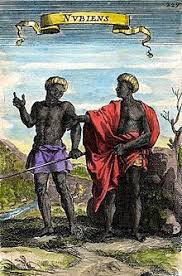
The Nubians, an ancient ethnic group native to the region along the Nile River in northern Sudan and southern Egypt, Nubian a rich and complex heritage that dates back thousands of years. Their culture, history, and contributions have played a significant role in shaping the broader history of Africa and the world.
Historical Background
The Nubian civilization is one of the oldest in Africa, with evidence of settlement in the region as early as 5000 BCE. Historically, Nubia was divided into two major regions: Upper Nubia (southern Egypt) and Lower Nubia (northern Sudan). The Kingdom of Kush, a powerful Nubian state, emerged around 1070 BCE and ruled as Pharaohs in Egypt during the 25th Dynasty, often referred to as the “Kushite Dynasty.” This period marked a significant era of cultural exchange between Nubians and Egyptians, blending traditions, art, and architecture.
Cultural Contributions
Nubians are renowned for their unique cultural contributions, which include their art, architecture, and language. The Nubian pyramids, found in Nubia’s ancient capital cities of Meroë and Napata, are some of the most striking and well-preserved monuments from ancient Africa. These pyramids, with their distinct steep angles and smaller scale compared to Egyptian pyramids, served as royal tombs and are a testament to the Nubians’ architectural prowess.
Nubian art, including pottery, jewelry, and sculptures, reflects a vibrant and intricate aesthetic. The use of vibrant colors, geometric patterns, and symbolic motifs in Nubian art provides insights into the spiritual and everyday life of the Nubian people.
The Nubian language, part of the Nilo-Saharan language family, has various dialects, such as Kenzi-Dongola and Nobiin. Despite historical pressures and modern influences, the Nubian language remains a crucial part of the Nubian identity, spoken and preserved through oral traditions and written forms.
Modern Nubian Identity
In contemporary times, the Nubians have faced significant challenges, particularly due to the construction of the Aswan High Dam in Egypt in the 1960s, which led to the displacement of many Nubians from their ancestral lands. This displacement had profound effects on Nubian communities, leading to a diaspora and a loss of traditional lands.
However, Nubians have shown remarkable resilience in preserving their cultural heritage despite these challenges. Efforts to revitalize Nubian culture and language are ongoing, with initiatives to teach Nubian history in schools, cultural festivals celebrating Nubian traditions, and the documentation of Nubian oral histories.
Nubian communities continue to play a vital role in the cultural and social fabric of the regions they inhabit. Their contributions to music, literature, and art enrich the cultural diversity of Africa and the world, ensuring that Nubian heritage remains a vibrant and cherished part of human history.
Conclusion
The Nubian people’s rich historical legacy and cultural contributions offer a profound glimpse into one of Africa’s most enduring civilizations. From their ancient pyramids and artistic achievements to their modern-day efforts to preserve their heritage, the Nubians embody a dynamic and resilient culture. Understanding and celebrating Nubian history not only honors their past but also enriches our appreciation of the diverse tapestry of human civilization.